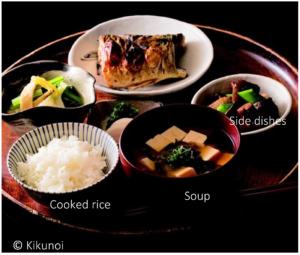Nutrition and Diversity: Exploring the Japanese Diet

The Japanese diet is full of variety and has the perfect balance of proteins, fats, carbohydrates, vitamins, and minerals. It also emphasizes fresh, seasonal ingredients, which makes it an incredibly healthy and flavorful cuisine.
Rice is a staple in the Japanese diet. It is served with every meal and is typically enriched with vitamins and minerals. It is also highly digestible and provides a good source of energy. As a side dish to rice, the Japanese often serve miso soup, which is filled with probiotic bacteria that are beneficial for digestion.
Fish, especially raw fish and sushi, is an important part of the Japanese diet. It is a great source of protein and omega-3 fatty acids, both of which are essential for good health. Fish also contains beneficial minerals such as phosphorus, selenium, and iodine.
Vegetables are also a major part of the Japanese diet. Leafy greens, seaweed, and cucumbers are popular choices. These vegetables offer a variety of nutrients including vitamins A, C, and K, as well as fiber and antioxidants. Pickles are also an important part of the Japanese diet and are usually served to compliment a meal.
Soybean products, such as tofu, edamame, and natto, are also a part of the Japanese diet. These foods are known for their high quality protein, beneficial fatty acids, and minerals like magnesium and iron.
Other foods that are commonly eaten in Japan include eggs, dairy products, nuts, seeds, and legumes. These foods provide essential nutrients like calcium, protein, probiotics, and vitamins A, D, E, and B complex.
Overall, the Japanese diet is incredibly nutritious. It includes a balanced mix of proteins, fats, carbohydrates, vitamins, and minerals. It is also rich in antioxidants and other beneficial compounds found in fresh, seasonal produce. This provides a great basis for a healthy lifestyle.

Comments